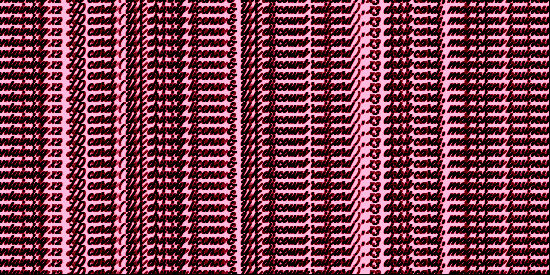
Inventory of my Bag
by Alice Riddell
‘Make an inventory of your pockets, of your bag. Ask yourself about the provenance, the use, what will become of each of the objects you take out.’
George Perec, Species of Space and Other Pieces
My handbag (as stands at 13.05 on Monday 14th May 2018):
Black wallet (containing x2 ID cards (UK driving license & UK discount railcard), x3 debit cards, magicians business card, x3 metro cards, laundry card, Chase business card, political party membership card, NYU health information card with brand and model of glasses written on it, British Airways bronze membership card, Guggenheim dual member card, $10 bill, x3 $1 bills, neatly folded never used $2 bill given to me for luck), sunglasses (red and black, double lens) in a sunglasses case (brown), house keys (x4 (x2 front door, main door, mail box)), plastic pink ‘A’ letter key-ring, x4 lighters (x3 small (x1 red, x2 lime green, x1 big (light blue), all Bic)), Matt Liquid Lipstick – Kylie Cosmetics (color Brown Sugar), Howl: Allen Ginsberg (book), yellow earplugs, gold/yellow memory stick, x1 giant polo mint, bits of broken crackers, loose change (x11 quarters, x5 cents, x1 dime, x1 5 cents).
And behold! A whole paragraph! Full of things! Looking beyond and straight into the everyday. Straight into my bag. I have noticed that a bag that seems quite empty is in fact so full! Some things I use everyday. Some of the things that I use everyday are very close neighbors to things that I don’t use everyday; my wallet, yet certainly not all of the contents; my keys, although definitely not all of them. The unused but by no means extraordinary. The someday everyday. These static items stay in the background, in the subterranean sections of my bag, often untouched and unwanted. x1 giant polo mint, yellow earplugs and loose change, I’m sorry you have been left out to pasture. Your supposed insignificance even more insignificant than the other contents of my bag, which are also supposedly insignificant (if they weren’t, there would be a great many more inventories of bags). And this is why Perec encouraged such a venture. To create a new anthropology that does not make the difference between the significance and insignificance significant!
This begs the question; does writing about something give it significance? Or is it the choosing to notice, with writing as a consequent circumstance, that creates significance? Is this why insignificance is generally relegated to the realm of the everyday? Because the everyday is rarely noticed due to its ephemeral and illusionary qualities? Because the everyday is insignificant? As Lefebvre notes, when one studies the everyday, makes the everyday a critical object, it becomes elevated, gains gravitas. Thus, when we write inventories and ethnographies of the everyday, of our handbags, we raise them up and into significance.
But this still fails to address what is significant about significance? Is significance the same as meaningfulness? What does the inventory of my bag mean? Does it mean anything? Perhaps it doesn’t and that’s the point. Or perhaps I can draw meaning out. For example, when totaled, I have $17.91 in my bag. According to the Entrepreneur, movie theaters in London cost exactly $17.91, although I am sure one could find cheaper tickets. The bookstore for The University of Vermont is selling as UVM sweatshirts, (crew neck, black (more colors available)) for $17.91, whilst Hanson Logo Wear offers a Beefy-Tee, (100% cotton, available in small to x3 large) for exactly the same price. Colors include ash, candy orange, charisma coral, stonewashed green, light steel, sand and lavender. Additionally, Amazon is selling Tom Rademacher’s novel Splitting Wood in paperback for $17.79. With this purchase I would even have 12¢ left over!
Have I found meaning? Does this really mean anything? Is this what Perec wanted? An inventory of what I could buy with the money I discovered from completing an inventory of my bag? Does it matter what Perec wanted? Either way, I am glad I have brought these items to my attention, and I suppose to any subsequent reader’s attention also. It feels significant as an act to have invited the pink plastic ‘A’ out to breathe in the day, to have called on the quarters and crushed crackers to come from their corners, especially as the latter met its demise as a direct result of the inventory. Insignificance to significance to insignificance. Perhaps I shall go to the Guggenheim sooner now.
Another question to pose is whether any of this is ethnographic? Or is it purposely anti-ethnographic as a means of critique? Perec insists on anthropology of Self. We should be looking in our own bags, questioning our own teaspoons and not those of Others, especially when that has often resulted in the pillaging of said bags and teaspoons. This is a nod to anthropology’s sour beginnings as a discipline and one that it has not entirely managed to shake. Anthropology, birthed out of colonial missions, was complicit in cultural appropriation and alterity confirmation of the Other, the “natives”. Their difference was a source of exploration, of study and ultimately of exploitation and objectification, as the subject is transformed into an object of study. Thus, we can also look at Perec’s inventory invitation as a critique on the social sciences. In future, we should turn the critical gaze back in and at ourselves. We should look for our own insignificance.
I probably don’t need 4 lighters.
Alice Riddell is originally from the U.K. and is currently studying at NYU’s Center of Experimental Humanities. She is Editor-in-Chief of an interdisciplinary journal called Caustic Frolic and her poetry as appeared in Breadcrumbs mag. Alice has also read her work as part of the Dead Rabbit Reading Series. She is an avid table tennis player.
Follow Vol. 1 Brooklyn on Twitter, Facebook, and sign up for our mailing list.
